Summary
This Job Aid covers:
Troubleshooting Modem before replacing
Connecting the Replacement Modem
This Job Aid supports the Technician audience.
Troubleshooting Modem before replacing
All troubleshooting steps must be complete before swapping a modem. Following the Trouble Isolation Check Sheet, a Modem Test must fail in order to continue. Do not replace the modem until the TIC directs the Technician to do so.
Connecting the Replacement Modem
There are three (3) cables coming out of the existing modem:
- One Power cord
- One Coaxial cable that connects to the antenna
- One Ethernet cable that connects to the computer
Follow the steps below to properly disconnect the existing modem and reconnect the replacement modem.
Caution: The Coaxial cables emit power. Follow each step in order to ensure safety!
Power off the computer that is connected to the existing modem
Unplug the modem power supply from the power source.
Unplug the Transmit cable from the TX port on the existing SurfBeam (SB2) modem.
Connect the Transmit cable to the TX port on the replacement SB2 modem.
Unplug the Ethernet cable from the Ethernet port on the existing SB2 modem.
Connect the Ethernet cable from the PC to the Ethernet port on the replacement SB2 modem
Plug the power connector from the replacement power supply into the replacement SB2 modem.
Plug the AC power cord into the power supply.
Plug the power supply into an AC outlet. Wait approximately two minutes for the modem to power on.
- Once the power supply is plugged into an AC outlet, the PWR light on the modem comes on and the RX light starts blinking.
Power on the computer and open the Internet browser.
Validating Modem Lock
When swapping a SurfBeam 2 (SB2) modem, the Technician verifies the modem lock process by accessing the Basic Status Page. This ensures that the modem locked correctly before proceeding to provision the new modem.
These steps assume that the ODU is mounted properly, aligned correctly and cabling/grounding are complete.
Open the computer’s Internet Explorer browser and type this URL into the Address bar:
http://192.168.100.1.
Click the forward arrow in the Address bar. The modem enters the Basic Status Mode.
Note 1: Google Chrome or Mozilla Firefox are the preferred browsers for this step. Other browsers may have different results.
Note 2: If a ‘website not found’ error appears, click the browser’s refresh button until the page appears.
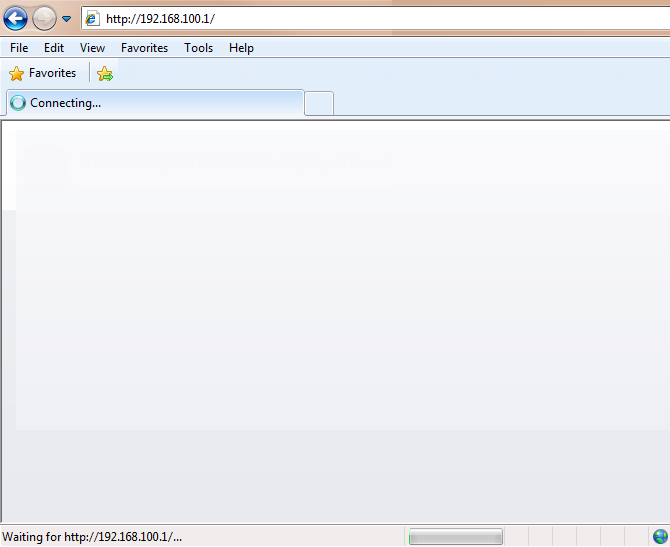
Click the modem icon to follow the modem lock process. 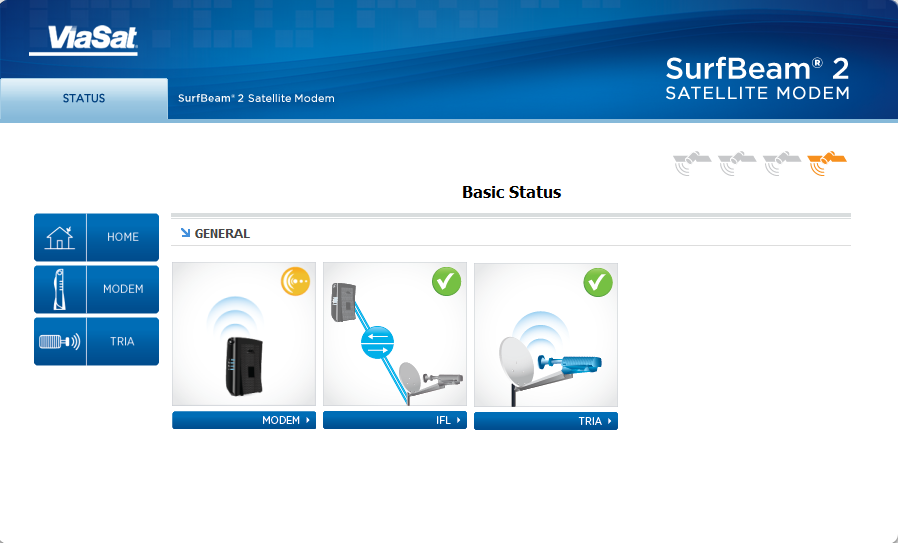
The Basic Status page changes to Modem/IFL Cable Status page. Confirm that these three events are happening:
- The SB2 modem’s RX and LAN lights are flashing.
- The Status is showing “Online”
- Confirm the current software is downloaded.
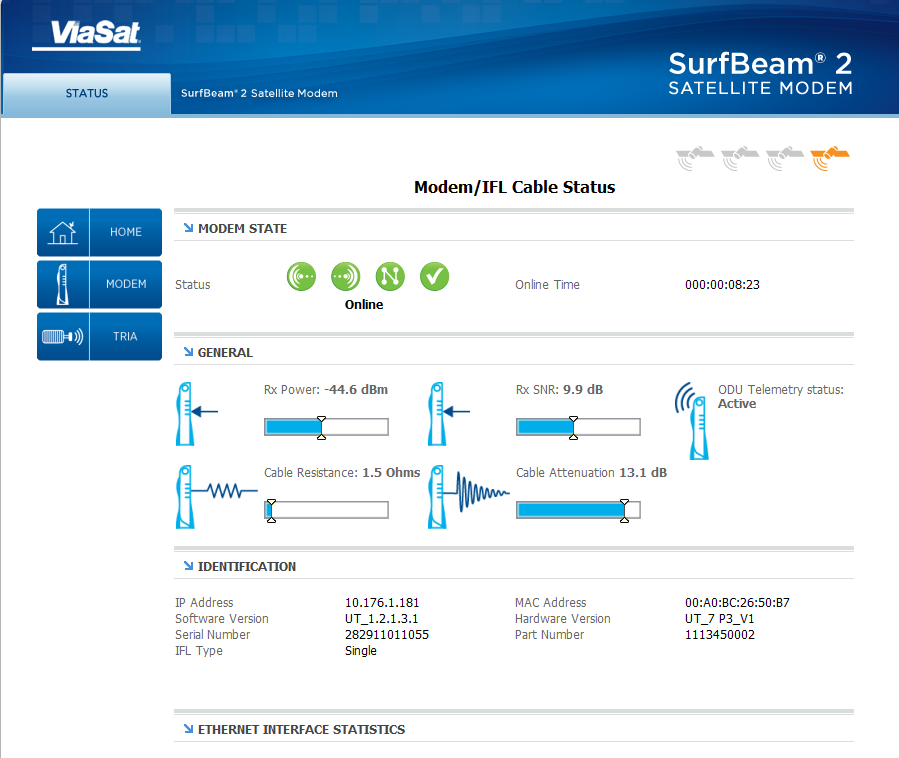
If the modem fails to lock (online status indicator), then put the modem into Install Mode using this URL: 192.168.100.1/install. Return to the antenna and complete a Push/Pull Test, and attempt Modem Lock again. Continue to follow the TIC until the modem locks, if necessary.
Close the browser.
SurfBeam 2 Provisioning
To complete the replacement modem’s provisioning, follow these steps:
Click the Internet Browser graphic Icon. This Icon is usually located on the Computer Desktop.
When the Internet browser opens, the Gateway automatically directs the browser to the Provisioning Network. The Provisioning System then displays the Installer SB2 Provisioning Portal – Welcome page.
On this page, enter the Customer Code in the Customer Code field. This code is found on the work order or in the Installation area of the SVT tab in the Support Portal.
Click Continue button to display the next page. 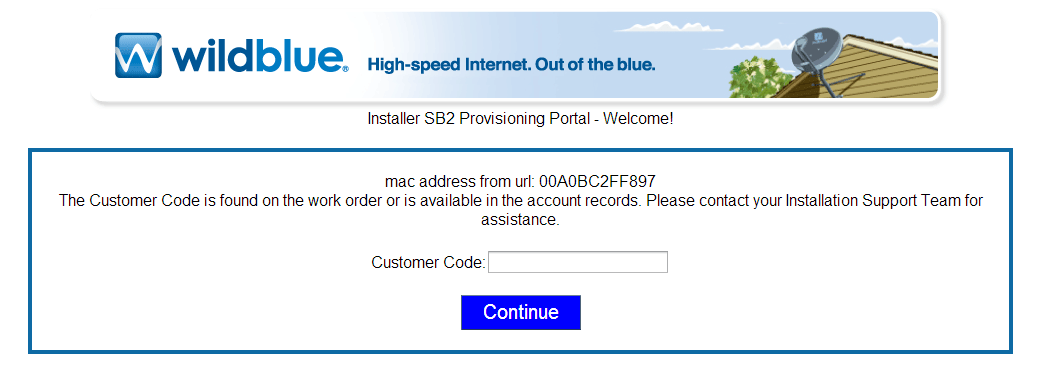
On the Customer Confirmation page, validate the Customer Location information. If it is incorrect, click Cancel and re-enter the correct Customer Code. Click the Confirm button to continue with the modem swap. 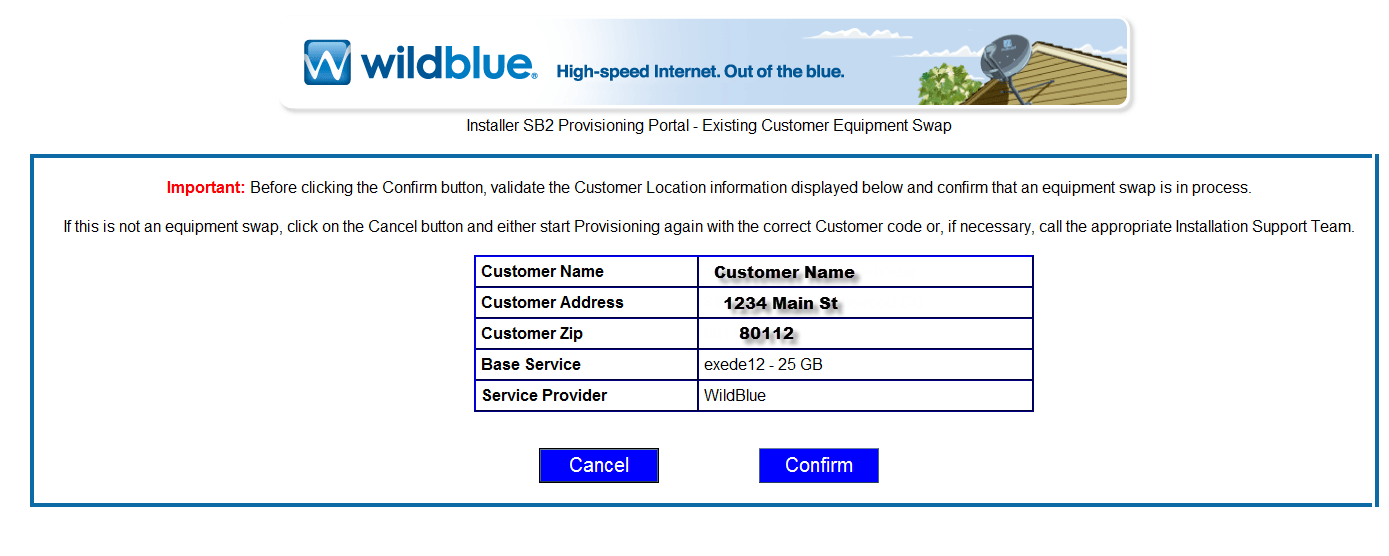
Once the Service Activated page displays, the Network requests a modem reboot. Verify that this reboot completes with Modem Lock. If the modem fails to reboot, force a reboot by removing power and supplying power again.
Once the modem has achieved Modem Lock, reboot the computer.
Once the computer reboot is complete, open the browser and complete Customer Internet Test to validate that the computer can access and surf the internet. 